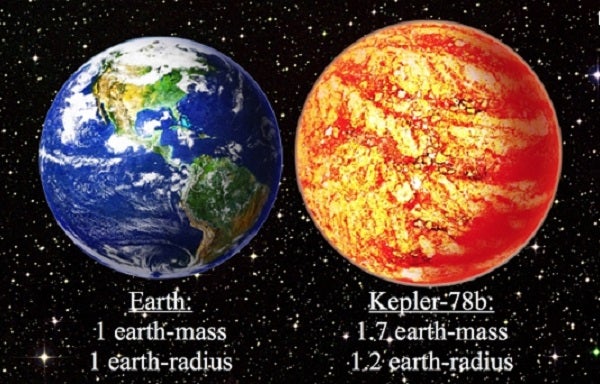Worlds of iron and Styrofoam: The real surprise about all those planets around other stars

NASA image shows the closest thing we've found to Earth's twin. A little bigger and a lot hotter
It would have surprising if all the other stars out there were devoid of planets. Why should our sun be so special? But until the mid-1990s scientists didn’t have the technology to detect planets outside of our solar system. Now there are more than 1000 confirmed planets around the galaxy and many more suspected.
The latest planet featured in the news is the most Earth-like known. Called Kepler 78-b, it has nearly the same size and density as our Earth, so astronomers strongly suspect it shares a similar rocky composition. The only big difference is that this planet orbits its star at a searing proximity – less than 1% of the distance between us and the sun. And it completes a “year” in 8.5 hours.
Some writers called it Earth’s evil twin or described it as hell on Earth. I critiqued the coverage for the Knight Science Journalism Tracker last week.
My favorite of the stories on Kepler 78-b pointed out the surprising fact that many of these faraway planets are nothing like the eight (not counting Pluto) in our solar system. Writing for Time.com, Mike Lemonick explains it this way:
Before they began finding exoplanets in droves, theorists mostly assumed size and composition went hand in hand—that a planet in the size range of Jupiter, for example, must be like Jupiter in all respects.
Turns out they were wrong. Among the very first worlds discovered by Kepler, for example, one, Kepler 7b, is 50% bigger than Jupiter, but with the density of Styrofoam. Another, Kepler 10b is about the size of Earth but is nearly as dense as pure iron. Yet another, GJ 1214b (this one wasn’t found by Kepler), is less than three times the size of Earth, and has a density that suggests it’s probably half-rock and half-water. “There have been a lot of surprises,” Howard admits.
Lemonick has some background in this area. He’s author of the book, Mirror Earth, the search for our planet’s twin.
WHYY is your source for fact-based, in-depth journalism and information. As a nonprofit organization, we rely on financial support from readers like you. Please give today.

